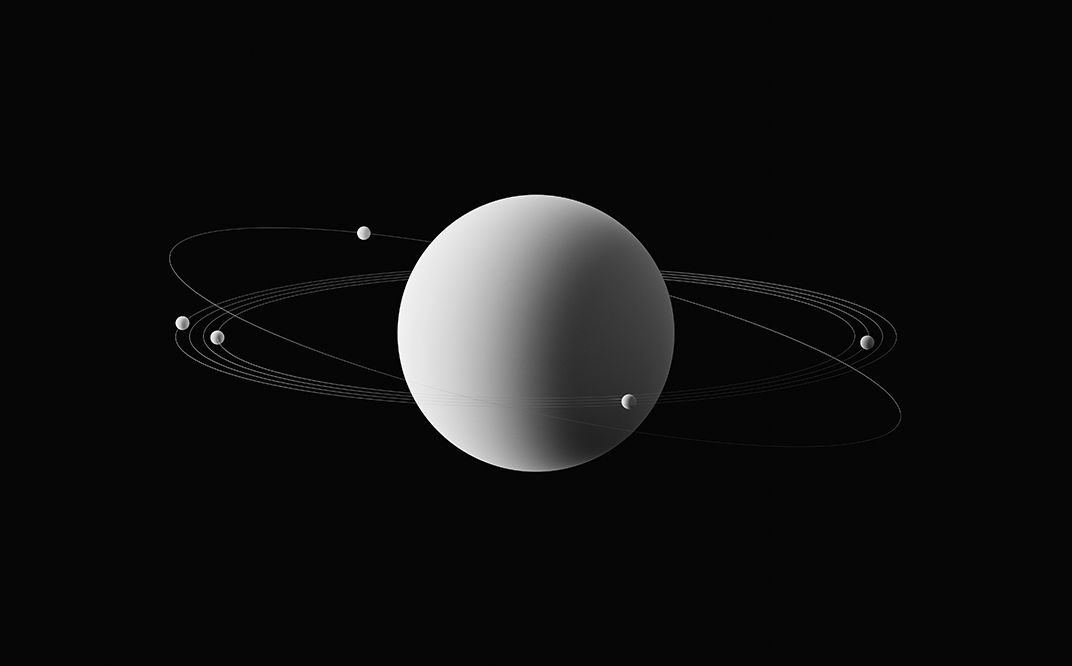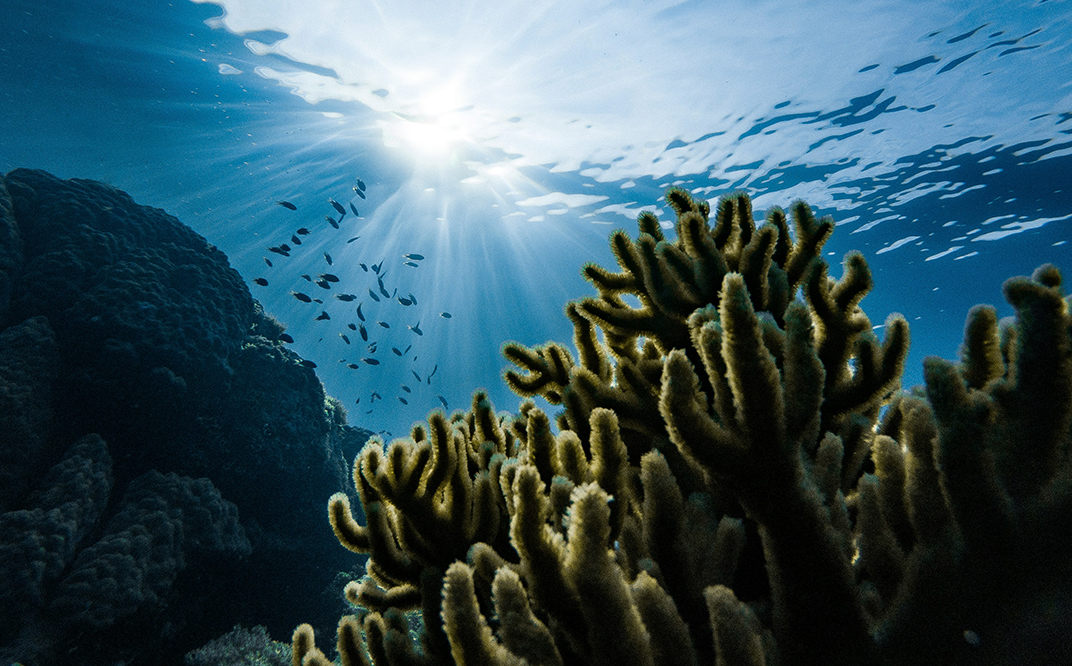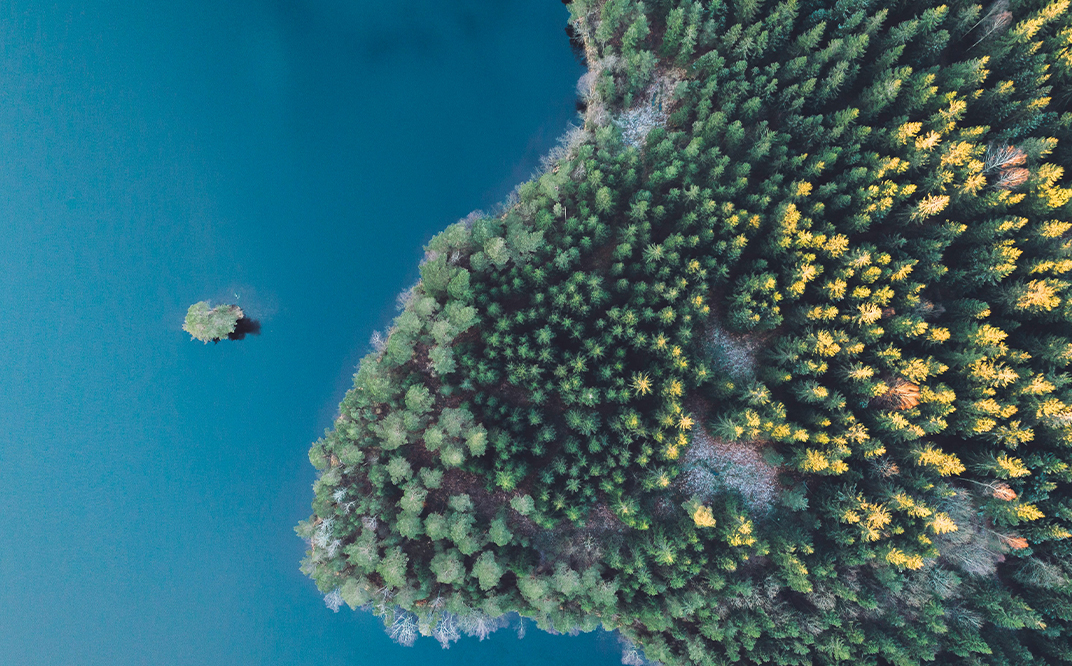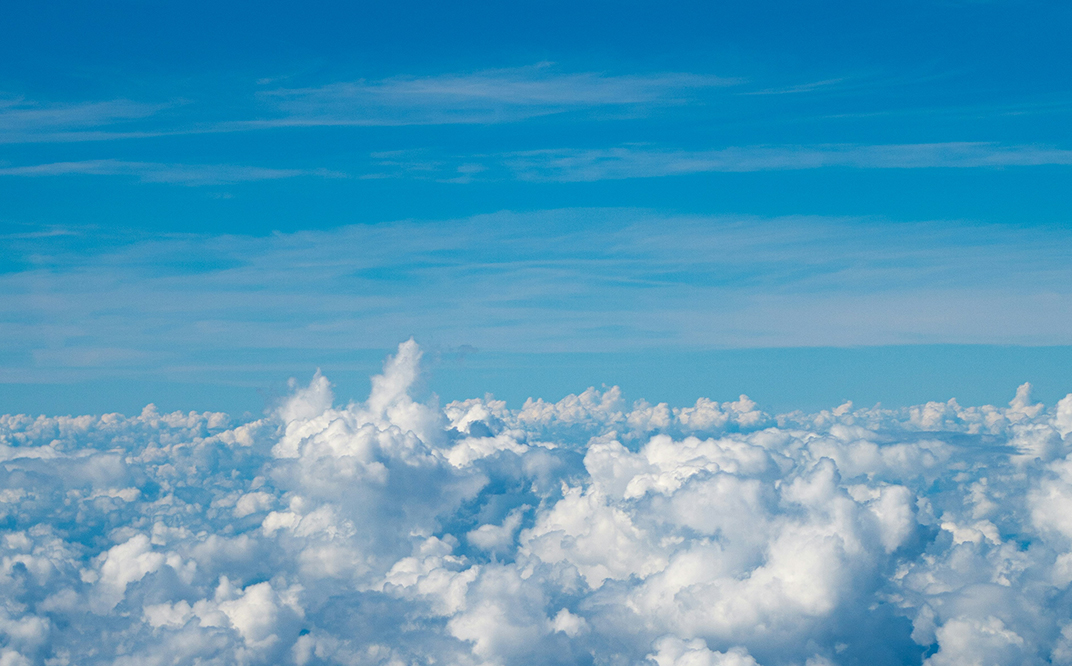What is the Carbon Cycle?
The carbon cycle is critical for the protection of living things and sustainable habitats. The carbon cycle, one of the basic material cycles, refers to the circulation of carbon between various layers, especially the atmosphere. However, fossil fuels and some human activities negatively affect this carbon cycle. This leads to serious environmental problems such as global warming and climate change.

Carbon Cycle
Carbon is one of the most important building blocks of the living cell. It is among the common components of organic substances such as protein, carbohydrate, vitamin and fat, which form the basis of living organisms. Carbon is the basis of energy sources and biological processes that ensure the continuity of life. For this reason, the carbon cycle is critical for the survival and diversification of living things and the continuation of life on earth.
The carbon cycle is one of the types of the matter cycle. It is the continuous movement of carbon, one of the most important components of all living things in the ecosystem.
The carbon cycle takes place between the layers of the biosphere, pedosphere, geosphere, hydrosphere and atmosphere. The carbon cycle, which is a geological and biological process, occurs as a result of life activities such as respiration, photosynthesis, erosion, decomposition, combustion and nutrition. The carbon cycle is also divided into two, the fast carbon cycle and the slow carbon cycle.
Fast Carbon Cycle
The fast carbon cycle is basically defined as the cycling of carbon over a lifetime. In other words, the fast carbon cycle is the movement of carbon through life forms or the biosphere on Earth. In light of this information, between 1,000 and 100,000 million metric tons of carbon pass through the fast carbon cycle every year.
The main components of the fast carbon cycle are phytoplankton (microscopic organisms in the ocean) and plants. Plants and phytoplankton absorb carbon dioxide from the atmosphere and take it into their cells. Plants use some of the carbon dioxide and energy from the sun to produce glucose and oxygen. In this process, the carbon dioxide released in the reaction is usually released into the atmosphere.
The conversion of carbon dioxide to oxygen by plants is a chemical reaction and is formulated as follows:
6 CO2 + 6 H2O + energy –> C6H12O6 + 6 O2
Apart from the cycle provided by plants and phytoplankton, the consumption of plants for energy by other living organisms also sets the stage for rapid carbon cycling. As plants and plankton are consumed, the plant sugars in their tissues are broken down. Plants and plankton at the end of their growth period die and decompose. In this case, oxygen combines with sugar to release water, carbon dioxide and energy.
This chemical reaction is formulated as follows:
CH 2 O + O 2 = CO 2 + H 2 O + energy
The rapid carbon cycle is fundamentally parallel to plant life. For this reason, the seasons that affect whether plants grow or die and decay are important for the rapid carbon cycle. For example, during winter in the northern hemisphere, few plants grow. The number of plants dying or decaying increases. This increases the amount of carbon dioxide in the atmosphere. With the arrival of spring, plants start to grow again. During this season, the level of carbon dioxide in the atmosphere decreases.

Slow Carbon Cycle
The cycle that carbon enters through a series of tectonic activity and chemical reactions is called the slow carbon cycle. At the heart of this cycle is the movement of carbon between soil, rocks, the ocean and the atmosphere. Carbon moves very slowly through these layers and takes approximately 100-200 million years to complete the cycle. On average, 10-100 million metric tons of carbon pass through the slow carbon cycle every year.
In the slow carbon cycle, the movement of carbon from the atmosphere to the lithosphere begins with rain. Carbon in the atmosphere combines with water to form a weak acid (carbonic acid) and falls to the earth’s surface with rain. This acid in the rain begins to dissolve rocks. This chemical erosion releases potassium, calcium, sodium and magnesium ions. These ions are transported to the oceans through rivers. In the ocean, calcium ions combine with bicarbonate ions to form calcium carbonate. The organisms (such as corals and plankton) that allow calcium ions to turn into calcium carbonate sink to the seafloor after they die. The sediment and shells of these organisms also turn into rock over time. Limestone and its derivatives also store carbon.
As a result of this chemical reaction, 80% of carbon-containing rock types are formed. The remaining 20% contains organic carbon. This organic carbon, formed from living things buried in layers of mud, is compressed over millions of years by pressure and heat. As a result, sedimentary rocks are formed. In some special cases, fossil fuels such as coal, oil and natural gas are also formed instead of sedimentary rocks.
Where limestone rocks do not form, carbonates and bicarbonates from shellfish combine with carbon from land. It can be transferred to sediments on the seafloor and stored there. This stored carbon can sit on the seafloor for hundreds or even thousands of years until the atmosphere needs carbon again. As the amount of carbon in the atmosphere decreases, carbon dioxide gas is released from the ocean into the atmosphere and re-entered into the carbon cycle. The opposite can also happen. When the amount of carbon in the atmosphere rises, the oceans absorb the excess carbon and continue to store it.
Another type of slow carbon cycle is caused by volcanoes. The Earth’s water and land surfaces are positioned on moving crustal plates. When these plates collide, one sinks under the other. As a result of this geological event, the rocks carried by the plate melt in the face of high pressure and heat. The heated rocks turn into silicate minerals and release carbon dioxide.
When volcanoes erupt, they vent the gas into the atmosphere and surround the earth with fresh silicate rock to restart the carbon cycle. Today, between 130 and 380 million metric tons of carbon dioxide are emitted into the atmosphere each year from volcanic eruptions. The amount of carbon dioxide emitted by humans using fossil fuels is about 30 billion tons. This is 100 to 300 times more than the amount of carbon dioxide produced by volcanic eruptions.
But nature regulates this carbon cycle between the atmosphere, land and ocean. For example, if the amount of carbon dioxide in the atmosphere increases due to volcanic eruptions, temperatures rise and more rain falls on the earth. More rocks melt as a result of the rains. It also creates enough ions to deposit more carbon on the ocean floor. On average, it takes a few hundred thousand years for the slow carbon cycle to rebalance through chemical erosion.
Within the slow carbon cycle, there are also processes that complete their cycle a little faster. The prominent layer in this process is the ocean. At the point where water meets air, carbon dioxide enters and exits the ocean in a continuous exchange with the atmosphere. Carbon dioxide entering the ocean enters into a chemical reaction with water molecules and causes hydrogen to be released. As a result, the ocean becomes more acidic. Hydrogen in turn reacts with the carbonate released by rock erosion to produce bicarbonate ions.
As a result, carbon cycles through the atmosphere in many ways. Living organisms have both direct and indirect effects on these processes that enable fast and slow carbon cycling.

What Are the Main Processes that Enable the Carbon Cycle?
There are some basic processes that enable the carbon cycle to take place. These processes can be summarized as follows:
Photosynthesis: Plants use sunlight, water and carbon dioxide to produce oxygen and nutrients through photosynthesis. During photosynthesis, carbon dioxide in the atmosphere is stored in the tissues of plants.
Respiration: All living things in the world break down food and produce energy through respiration. The carbon dioxide stored by plants during respiration is released back into the atmosphere.
Combustion: Forest fires and other fires, especially the burning of fossil fuels, cause more carbon dioxide to be released into the atmosphere.
Precipitation: Carbon dioxide in the oceans turns into carbonate and bicarbonate ions over time. These ions precipitate to the ocean floor and carbon dioxide is stored.
Dissolution in Water: Due to its structure, carbon dioxide is soluble in water and turns into carbonate and bicarbonate ions.
Waste Production: The wastes of all living things, including humans, contain carbon dioxide, methane and other greenhouse gases. These gases in waste are released into the atmosphere, causing the greenhouse effect and creating a form of the carbon cycle.
Burial underground: Animal and plant remains turn into fossil fuels over millions of years. The conversion of these fossil fuels into energy paves the way for the production of carbon dioxide and the completion of the carbon cycle.

Where is Carbon Stored?
Carbon is stored when it is not cycling and is not released as carbon dioxide. The storage areas of carbon are generally the atmosphere, water bodies and the earth. In the earth, carbon is usually found in the structure of oil, coal and limestone. Carbon, which is found in the atmosphere as carbon dioxide, is also found in water as both carbon dioxide and bicarbonate.
The places where carbon is stored can be listed as follows:
- Atmosphere,
- Ocean surface and depths,
- Kerogen
- Biosphere (living and dead biomass),
- Fossil fuels.
The amount of carbon between all storage sites varies over time. Biological, chemical, physical and geological processes underlie these changes. But even though the amount of carbon between sites varies, the carbon exchange between ecosystems is perfectly balanced.
The Importance of the Carbon Cycle for Sustainability
The carbon cycle is an essential process for the survival of life on Earth. Disruption of the carbon cycle on the planet creates a number of environmental problems, including loss of biodiversity and climate change. As a result, the habitat of living things is threatened. For this reason, the carbon cycle must be realized smoothly. In order for the carbon cycle to become sustainable, an intensive effort is required from a global scale to individual awareness.
Today, the increase in greenhouse gas emissions and the destruction of forests pave the way for the disruption of the carbon cycle. One of the most important consequences of the carbon cycle is climate change. In particular, the increase in greenhouse gas emissions leads to an increase in the amount of carbon dioxide in the atmosphere. As a result, climate change and global temperature increase accelerate.
Energy efficiency should be increased, greenhouse gas emissions should be reduced, forests and biodiversity should be protected in order to ensure that the carbon cycle is not disrupted and, accordingly, to ensure the sustainability of life on earth. In this way, possible environmental problems can be prevented.
What Factors Affect Carbon Formation in the Atmosphere?
Carbon, which is usually present in the atmosphere as carbon dioxide, is formed as a result of many actions of living things. These actions include respiration, photosynthesis, combustion and fossil formation. Other factors affecting carbon formation can be listed as follows:
- Volcanic eruptions in volcanoes,
- Cellular respiration,
- Mobility of water surfaces,
- Dissolution of carbonate rocks,
- Dissolution of dying organisms.

Impact of Human and Company Activities on the Carbon Cycle
The occurrence of the industrial revolution and the acceleration of industrial activities led to an increase in the impact of humans on the carbon cycle. In this context, the direct and greatest impact of human activities on the carbon cycle comes from the use of fossil fuels. With the combustion of fossil fuels, carbon is directly transferred from the geosphere to the atmosphere.
Fossil fuel use is followed by land misuse and deforestation. As a result of these two main wrong actions, the amount of carbon dioxide in the atmosphere increases and this sets the stage for environmental problems. Along with the use of fossil fuels, people need to be made aware of the efficient use of agricultural land and waste management.
Another human impact, which is also related to industrialization, is the transformation of limestone into cement through chemical processes. As a result of this transformation, the cobalt in limestone is released. Another human activity that affects the carbon cycle is the carbon cycle in the oceans. However, this is not a direct effect, but rather an indirect one. Climate change leads to higher ocean temperatures and changes in the ocean ecosystem. As a result, the atmosphere’s ability to absorb carbon may decrease and biodiversity may be negatively affected.
When it comes to industry, company activities also have an impact on the carbon cycle. Especially companies that use fossil fuels in their production processes have a direct impact on the carbon cycle. For this reason, it is very important for companies to turn to renewable energy sources if possible or to develop strategies for energy efficiency.
Another important issue for companies is their policies on resource use and waste management. Companies should consider the life cycle in resource use, be sensitive about recycling and minimize negative environmental impacts by following sustainability policies.
The Consequences of Affecting the Carbon Cycle
The carbon that is increasing as a result of the activities of people, institutions and companies has to go somewhere. So far, 55% of the carbon has been absorbed by ocean and land plants. The other 45% of excess carbon remains in the atmosphere. Over time, oceans and land plants will take up most of the remaining carbon. But 20% of this amount can remain in the atmosphere for thousands of years. Basically, all changes in the carbon cycle affect both living things and their habitats.
Effects in the Atmosphere
Carbon dioxide is an important gas that controls the earth’s temperature. This is why greenhouse gases such as carbon dioxide, various halocarbons and methane cause the earth to warm up. If there were no greenhouse gases at all, the earth would be frozen. Too many greenhouse gases would cause the earth’s temperature to reach 400 degrees Celsius. For this reason, the balance of greenhouse gases in the atmosphere is very important.
An increase in the earth’s temperature also brings some effects. One of these effects is the evaporation of more water from the oceans due to increasing temperatures. This evaporation expands air masses and leads to higher humidity levels. As a result, as the carbon content in the atmosphere increases, the temperature and humidity continue to rise.
Impacts on land
Plants growing on land have absorbed about 25% of the amount of carbon dioxide that humans release into the atmosphere. But the amount of carbon absorbed by plants varies each year. At the same time, when there is more carbon dioxide in the atmosphere than plants can use in photosynthesis, plants grow more. This is known as carbon fertilization. In the absence of other environmental problems, such as water scarcity, a doubling of carbon in the atmosphere would allow plants to grow by between 12 percent and 76 percent.
One of the factors changing carbon absorption on land is related to the use of agricultural land. With modern agriculture, the era of growing more food on less land has begun. Unused agricultural land continues to turn into forests. These forests store much more carbon. In many parts of the world, forest fires are controlled to prevent carbon from entering the atmosphere. The growth of land plants and the protection of forests also help to absorb human-induced carbon surpluses. In tropical regions, the situation is different. As a result of unpreventable forest fires, forests are destroyed and carbon dioxide emissions increase.
In this context, changes in the carbon cycle are likely to contribute to climate change. Increased temperature and humidity due to carbon dioxide leads to longer seasons. This also leads to soil warming. When the soil warms, organic matter decays and carbon is released into the atmosphere in the form of methane and carbon dioxide.
Impacts on the Ocean
About 30% of the increased human-caused carbon dioxide has been released directly into the ocean through chemical change. The increased amount of carbon dioxide in the ocean has also led to an increase in acidity. Acidification of ocean water has two different consequences. The first is the chemical reaction of carbonic acid with carbonate ions in the water to form bicarbonate. This can reduce the amount of calcium carbonate that some animals need to form shells. As a result, the animals’ shells become thinner and more fragile.
The second remarkable result is that as the acidity of the water increases, its ability to dissolve calcium carbonate also increases. This means that in the long run the ocean can absorb more carbon dioxide. But in the same way, the acidification of ocean water also causes the shells of marine organisms to dissolve and weaken. Warming ocean water can also lead to a decline in phytoplankton, which thrive in cool, nutrient-rich waters.
Calculate Your Carbon Footprint with QuickCarbon
As QuickCarbon, we offer software that develops calculation and reporting solutions according to ISO 14064-1:2018 Standard and GHG Protocol to give your corporate identity an environmentally friendly image and to make your company sustainable. You can calculate your corporate footprint with QuickCarbon and take the necessary steps for a more sustainable future.